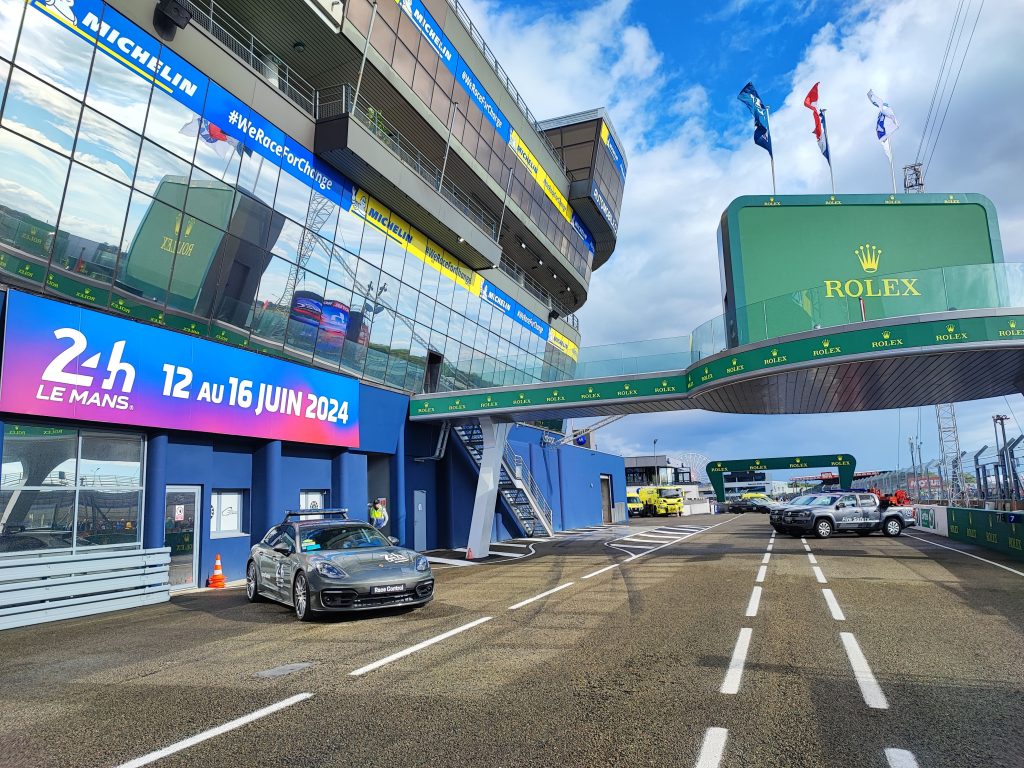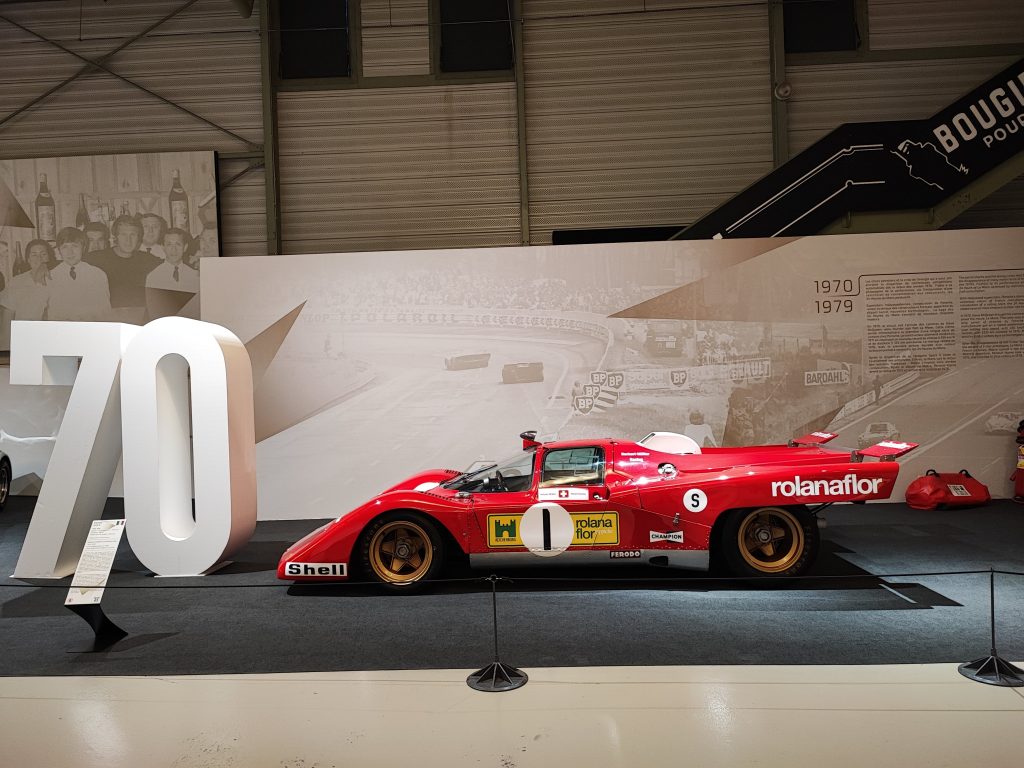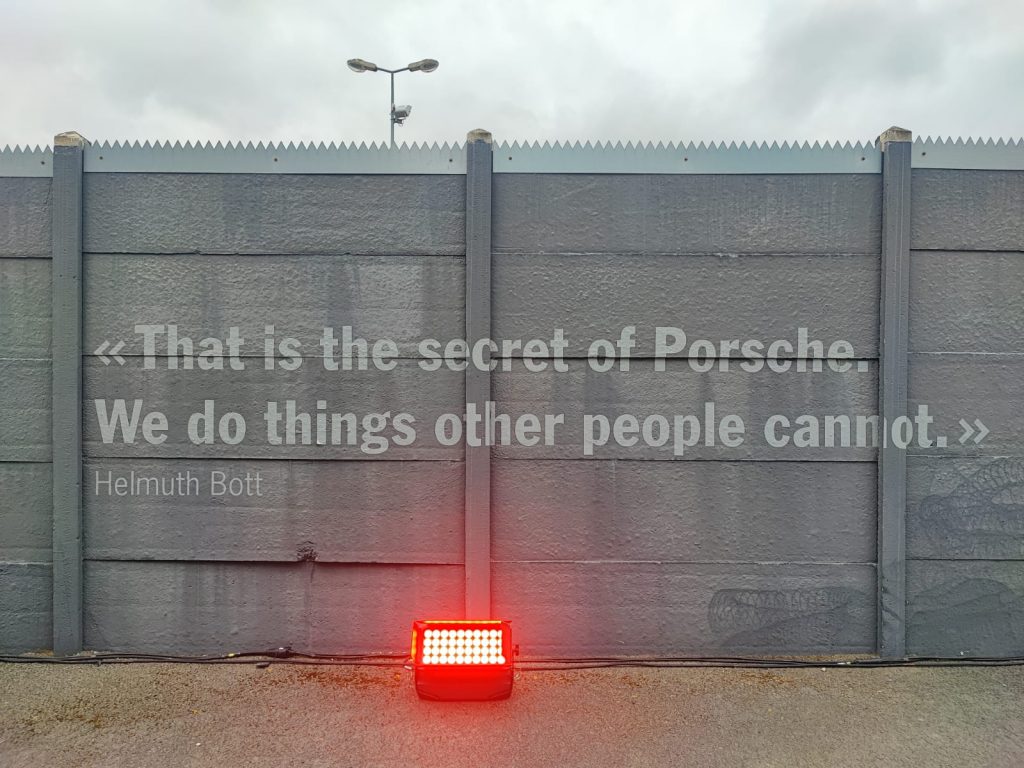More than just an excuse to see how many times a car can go around a track in 24 hours, the 24 Hours of Le Mans is a historic race that continues to push the spirit of innovation in the automobile industry.
As the die-hard Ghosties in the audience probably know already, our favourite Finance Ghost fulfilled a lifelong dream by attending the 24 Hours of Le Mans in France this past weekend. Of course, being the triviahound that I am, I couldn’t let him get away with attending such a historic event without making him learn some of the facts behind it as well. So, for all the motorsport fans who are reading – and with a special dedication to the purple ghost at the trackside in France – here’s the abridged history of Le Mans.

A journey through time and speed
Known in French as “Les 24 Heures du Mans,” this legendary race has been a cornerstone of endurance racing since its inception in 1923. Held annually near the town of Le Mans, France, this gruelling test of speed, strategy and stamina has become a symbol of automotive innovation and human perseverance.
The race was conceived by the Automobile Club de l’Ouest (ACO) as a showcase for automotive durability and performance. Unlike traditional races focused solely on speed, Le Mans was designed to test the endurance of both car and driver over a 24-hour period, as the winner would rack up the greatest amount of laps around the track instead of the greatest speed. The first race took place on May 26-27 of 1923, on a roughly 17km circuit that incorporated public roads around the town of Le Mans.
As you might imagine, these early races were marked by rugged terrain and primitive technology, with cars often breaking down or crashing along the course. This became an impetus for car manufacturers to use Le Mans as a kind of extreme test for the durability of the vehicles they were building, not only for racing, but for everyday use. If a car manufacturer could prove that their vehicle was good enough to survive the tests put to it at Le Mans, that became a feather in their cap that the automobile-purchasing public took note of.
Innovate or get left behind
The 1920s and 1930s saw the race come into its own as a proving ground for technological advancements. Manufacturers such as Bentley, Bugatti and Alfa Romeo dominated the early years, with Bentley achieving notable success, including a string of victories from 1927 to 1930. These years were characterised by rapid innovation, with massive advancements in engine performance, aerodynamics and tire technology.
The race was interrupted by World War II and resumed in 1949. This post-war era saw the emergence of Ferrari and Jaguar as dominant forces. Ferrari in particular established itself as a post-war powerhouse, with six consecutive wins from 1960 to 1965. This of course led to the infamous rivalry between Ferrari and Ford during the 1960s, which has gone on to become one of the most storied chapters in Le Mans history.
After Enzo Ferrari rebuffed Ford’s attempt to buy his company, Henry Ford II sought revenge – not in the boardroom, but on the racetrack. The result was the creation of the Ford GT40, a car designed with no purpose other than to defeat Ferrari at Le Mans. After several years of development and setbacks, Ford finally triumphed in 1966, securing a 1-2-3 finish and ending Ferrari’s dominance. Ford went on to win the race for four consecutive years, cementing the GT40’s place in motorsport history.
(In case you didn’t know, there’s an excellent film about this rivalry currently streaming on Netflix – the aptly named “Ford vs Ferrari”)

An era of marvels
Automobile innovation has always been the theme of Le Mans, and many of these innovations have migrated from the racetrack to public roads as a result.
This is no coincidence – in fact, the rules and regulations around the race were created with exactly this effect in mind. Manufacturers participating in Le Mans are mandated to use four-stroke piston engines fueled by petrol or diesel, along with a fresh air intake system, which are all easily transferable to production cars. Additionally, certain high-cost materials and systems, such as electromagnetic valves, are prohibited because they are too expensive for commercially available vehicles. These regulations foster an environment where innovations can seamlessly transition to ordinary cars.
There are numerous examples of direct connections between these seemingly distinct realms of racing and consumer vehicles. For instance, in 2001, Audi triumphed in a race using a direct-injection petrol engine. By 2003, this technology was implemented in their road cars – does the TFSI badge sound familiar? In 2011, Audi’s R18 racecar featured LED headlamps that significantly improved visibility at night. These lighter, more compact and eco-friendly headlights are now standard on many production models. Other innovations such as disc brakes, fog lamps, front wheel drive and quartz-iodine headlights all made their debut at Le Mans before being adopted by car manufacturers worldwide.
The strength of the human spirit
Just as innovations made to the racecars at Le Mans eventually find their way into our everyday driving experiences, so too did one particular story of human endurance inspire both on and off the track.
In 2016, Frédéric Sausset made history as the first quadruple amputee to finish the 24 Hours of Le Mans. This remarkable achievement followed a life-altering event in 2012 when Sausset, a lifelong motorsport enthusiast, contracted a deadly form of septicemia while on holiday just weeks after attending Le Mans. The severe infection led to the amputation of all four of his limbs.
During his recovery in the hospital, Sausset resolved to refocus his life not just to adapt to his disability, but more importantly, to challenge his abilities. He recognised that a key part of his rehabilitation would involve setting ambitious goals. His enduring passion for motor racing inspired him to aim for participation at the highest level, where he could push both his personal limits and those of engineering and technology.
Sausset embarked on an intensive fitness regimen that would test even the most able-bodied individuals. This rigorous training was essential to build the physical strength needed to withstand the extreme forces of acceleration, cornering and braking encountered in motor racing. Additionally, he worked on developing the skills and racecraft necessary to transition from a good road driver to a competitive racing driver.
The meticulous preparation and hard work paid off. In June 2015, it was officially announced that Sausset and his SRT 41 by OAK Racing team would be granted the prestigious ‘Garage 56’ entry for the 2016 24 Hours of Le Mans.
After 24 gruelling hours of racing, with only 44 of the original 60 starters classified, SRT 41 by OAK Racing successfully brought car 84 home in 38th position. This accomplishment was nothing short of extraordinary, given the extensive list of innovations and adaptations made to the car to accommodate Sausset’s needs. His journey not only marked a significant milestone in motorsport history but also showcased the incredible potential of human spirit and technological ingenuity – a performance that no doubt went on to inspire countless individuals like Sausset to hold fast to their passions and push through their challenges.

Moving with the times
The 21st century has seen a continued focus on innovation and sustainability at Le Mans. Hybrid technology has become a focal point, with manufacturers like Toyota and Porsche developing hybrid prototypes that combine internal combustion engines with electric powertrains. Toyota’s TS050 Hybrid has been particularly successful, securing multiple victories in recent years.
Le Mans has also embraced new technologies and sustainable practices. The “Garage 56” concept allows experimental vehicles to participate in the race, pushing the boundaries of what’s possible. This initiative has led to the inclusion of hydrogen-powered and fully electric vehicles, showcasing the potential future of motorsport.
This year’s race will see the culmination of a process that has been years in development and mysteriously dubbed “MissionH24”. While it may sound like something out of a spy movie (probably directed by Tom Cruise), MissionH24 marks the first time that a fully hydrogen-powered vehicle will participate at Le Mans. The MissionH24 project aims to showcase hydrogen as an alternative fuel in motorsport and help lay down a framework for its use in sportscar racing.
Le Mans organiser, the ACO, will officially allow hydrogen-powered machinery using either fuel cell or combustion technology from 2027, and is expecting the first cars to arrive to compete on the grid the following year.
An enduring legacy, and a legacy of endurance
The 24 Hours of Le Mans is a testament to the relentless pursuit of excellence and the unbreakable spirit of competition. From its humble beginnings in 1923 to the high-tech marvels of today, Le Mans has continually pushed the boundaries of what is possible in automotive engineering and endurance racing. The race has seen legendary battles, heartbreaking tragedies and triumphant comebacks, each contributing in its own way to its rich and storied history.
As we look to the future, the 24 Hours of Le Mans will undoubtedly continue to be a beacon of innovation and excitement. Whether through the development of new technologies, the emergence of new rivalries, or the sheer thrill of the race itself, Le Mans will remain an enduring symbol of the ultimate test of man and machine.
Note from the Ghost: if you have even the smallest love of racing, Le Mans is an extraordinary experience. It is an astonishing showcase of both the technology that moves us and the sheer power of human ambition. It also happens to include some outrageously impressive fireworks while under safety car for repairs to the track. Here’s the view from the grandstand:
About the author: Dominique Olivier

Dominique Olivier is the founder of human.writer, where she uses her love of storytelling and ideation to help brands solve problems.
She is a weekly columnist in Ghost Mail and collaborates with The Finance Ghost on Ghost Mail Weekender, a Sunday publication designed to help you be more interesting.
Dominique can be reached on LinkedIn here.





Great adventure to be at LeMans, well done Ghost! I am a big Ferrari fan myself and it was awesome to see the beautiful machines finishing in 1st and 3rd. Thanks for sharing your experience.
Sounds like the boys are having lots of fun!
I was there in 2017. Bucket experience. Not forgetting the beautiful city of Le Mans of course and the car museum
Hi Dominique
Was it due to the Ghost’s dislike of Porsche’s that you forgot to mention which marque has won Le Mans the most times (19 by the way)?
🙂 🙂
Haha no dislike here. Just not my favourite on track!
I know nothing about racing, but was enthralled by the film recommendation “Ford vs Ferrari”. Thanks for this
Great film!
I attended the 24 hour race during the Ford/Ferrari competitive years. Having received a sponsorship from BP South Africa I was fortunate to stay in the same hotel as the Ford team thus meeting many of their staff. During practice the GT40’s were cracking windscreens at the end of the Mulsanne straight, apparently due to the big temperature change at the bottom of the straight. Twentyeight new windscreens were flown in from the States for replacements.
One small mistake in the Ford/Ferrari film. Enzo Ferrari never attended a motor race. he watched from his home
Regards
Jan Phillips
p.s. My sister graduated from Michaelis in 1953 ! and my grand daughter has started this year at Michaelis
Love that – must have been an absolutely incredible experience!